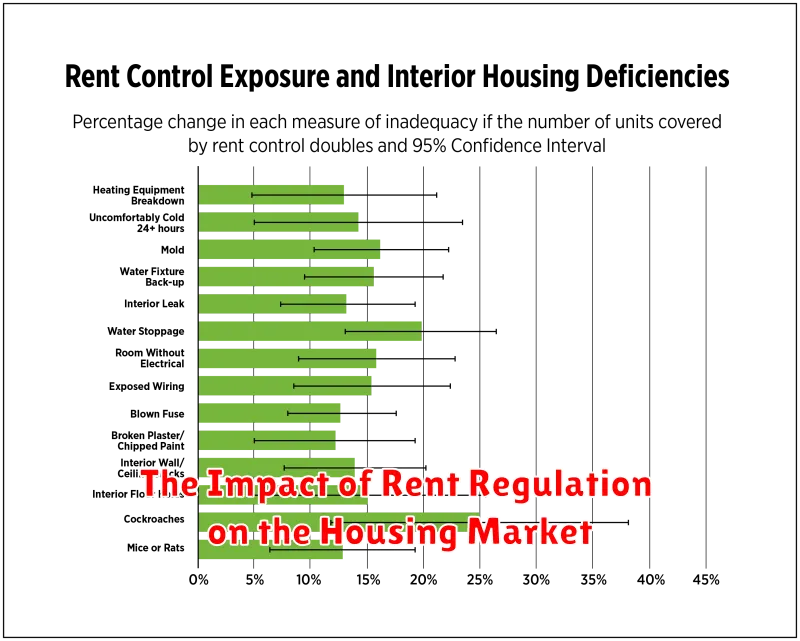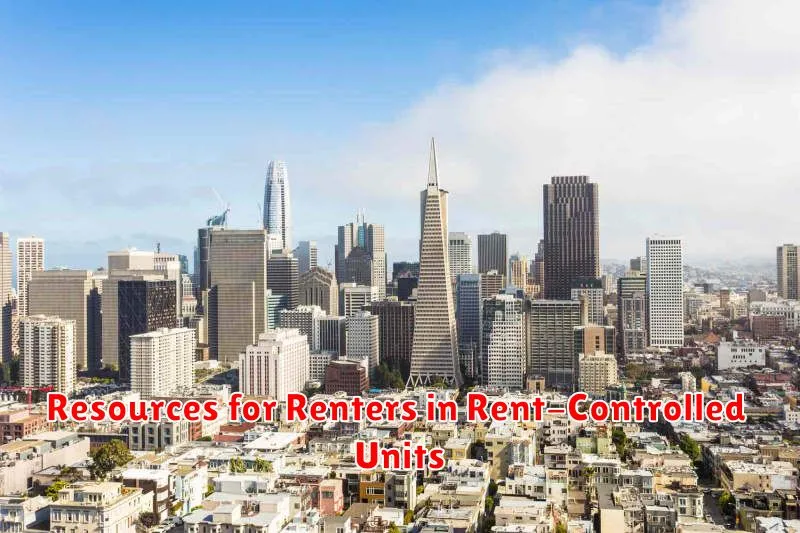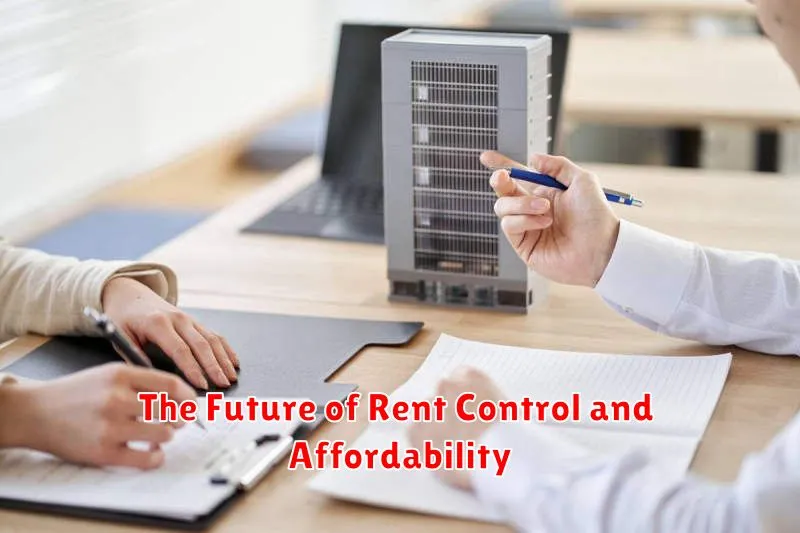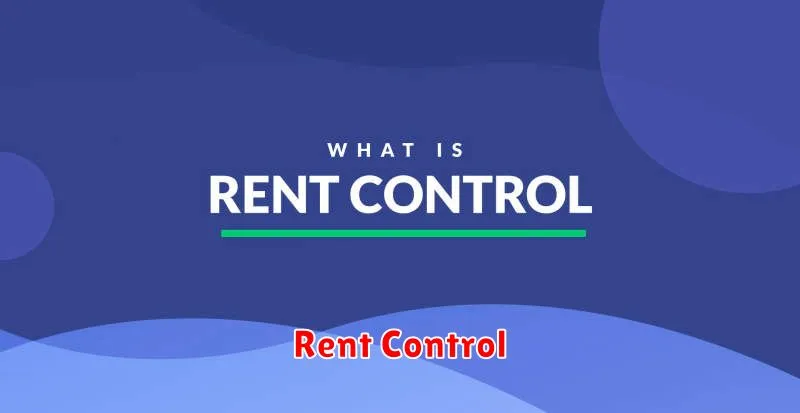Are you a renter in a major city? If so, you’ve likely heard the terms “rent stabilization” and “rent control” thrown around. But what do they really mean, and how do they impact you? This guide will break down the basics of rent stabilization and rent control, explaining their differences, benefits, and drawbacks. We’ll also cover the legal requirements and your rights as a tenant in a regulated apartment. Whether you’re a new renter or a seasoned veteran, understanding these concepts can help you make informed decisions and protect your financial well-being. Let’s delve into the world of rent regulations and discover how they can impact your life.
What is Rent Stabilization?
Rent stabilization is a form of rent control that aims to protect tenants from excessive rent increases. It is a system of regulations that sets limits on how much landlords can raise rents for certain apartments. This is done to ensure that tenants can afford to live in their homes and to prevent displacement. It’s important to understand that rent stabilization is not the same as rent control. While both types of regulation limit rent increases, rent control sets specific limits on how much landlords can charge for rent, while rent stabilization sets limits on how much they can increase the rent.
To be eligible for rent stabilization, an apartment must meet certain criteria, which vary by location. For example, in New York City, rent-stabilized apartments are typically those built before 1974 and have at least six units. Rent stabilization is often found in densely populated areas with a high demand for housing, as it can help to moderate rent increases and protect tenants from displacement.
Rent stabilization is a complex system with many rules and regulations. If you are a tenant in a rent-stabilized apartment, it is important to understand your rights and responsibilities. You should also be aware of the landlord’s obligations and the process for challenging rent increases.
How Rent Control Works
Rent control is a government regulation that limits the amount landlords can charge for rent on certain properties. It is typically implemented in areas where housing is in high demand and there is a limited supply.
Rent control works by setting a maximum rent that landlords can charge. The maximum rent is usually based on the rent that was charged at the time the law was passed or on a specific date in the past. Landlords are not allowed to raise the rent above the maximum amount, even if the market rate for similar units has increased.
Rent control can be applied to different types of housing, such as apartments, single-family homes, and mobile homes. The specific rules of rent control vary from city to city and state to state.
Here are some of the key features of rent control:
- Rent control typically applies to existing tenants, not new tenants. In other words, if a tenant moves out, the landlord can charge the new tenant a higher rent that is not limited by rent control.
- Rent control limits the amount of rent increases landlords can charge. The specific percentage increase is usually determined by a government agency or by law.
- Landlords are generally required to provide tenants with a reason for raising the rent.
- Rent control often includes a mechanism for tenants to appeal rent increases that they believe are unfair or excessive.
Rent control is a controversial policy. Some people believe that it helps to protect tenants from unfair rent increases and provides them with greater housing stability. Others argue that it discourages landlords from investing in their properties and can lead to a shortage of affordable housing.
Eligibility Criteria for Rent-Stabilized Apartments
Rent-stabilized apartments are subject to strict eligibility criteria that must be met in order to qualify for rent protection. These criteria are designed to ensure that only tenants who meet specific requirements benefit from rent stabilization.
The following are the primary eligibility criteria for rent-stabilized apartments in New York City:
- Building Eligibility: The apartment must be located in a building that was built before February 1, 1974, or that was converted to a rental building after that date, and meets specific rent stabilization criteria.
- Lease Commencement Date: The lease must have commenced on or after July 1, 1971. This means that apartments rented before this date are not subject to rent stabilization.
- Legal Rent: The rent must be below a certain threshold, known as the legal regulated rent. This threshold is set by the New York State Division of Housing and Community Renewal (DHCR) and can vary depending on the size and location of the apartment.
- Occupancy: The apartment must be occupied by the tenant as their primary residence.
- Tenant Income: There is no income limit to qualify for rent stabilization, however, tenants must meet the other eligibility criteria mentioned above.
It is important to note that these are just the general eligibility criteria. There may be other specific criteria that apply depending on the specific circumstances. It is always best to consult with an attorney or housing expert if you have any questions about rent stabilization eligibility.
Benefits of Rent Stabilization for Tenants
Rent stabilization is a form of government regulation that limits how much landlords can raise rents on certain rental units. It’s designed to protect tenants from exorbitant rent increases and ensure that they have a stable and affordable place to live. Here are some key benefits of rent stabilization for tenants:
Stable Housing: Rent stabilization provides tenants with a sense of security knowing that their rent won’t skyrocket overnight. This allows them to budget more effectively and plan for the future. It also reduces the risk of being displaced due to unaffordable rent increases, allowing tenants to build a community and establish roots in their neighborhood.
Protection from Unfair Rent Increases: Landlords cannot raise rents beyond a specific percentage each year, determined by the local rent stabilization board. This prevents landlords from taking advantage of tenants and ensures that rent increases are reasonable and justifiable.
Increased Tenant Rights: Rent stabilization often comes with additional tenant protections, such as greater security of tenure, the right to legal representation during eviction proceedings, and stronger tenant-landlord dispute resolution mechanisms.
Improved Living Conditions: By giving tenants more stability and a sense of control, rent stabilization can encourage them to invest in maintaining and improving their living conditions. This can ultimately benefit both tenants and landlords.
Community Preservation: Rent stabilization helps to preserve the diversity and affordability of neighborhoods. It prevents a mass exodus of long-term residents and ensures that a mix of income levels can afford to live in the community.
While rent stabilization can have its drawbacks, its benefits for tenants, particularly in areas with tight housing markets, are undeniable. It provides a much-needed layer of protection, promoting affordability, stability, and fairness in the rental market.
Responsibilities of Landlords in Rent-Controlled Buildings
Landlords in rent-controlled buildings have specific responsibilities that are outlined in the rent control laws of their city or state. These laws are designed to protect tenants and ensure that they have safe and habitable living conditions. It is crucial for landlords to understand these responsibilities and comply with them to avoid legal issues and maintain good relationships with their tenants.
One of the most important responsibilities of a landlord in a rent-controlled building is to provide a safe and habitable living environment. This includes maintaining the building’s structural integrity, providing adequate heat and hot water, ensuring proper plumbing and electrical systems, and keeping common areas clean and safe.
In addition to maintaining the physical condition of the building, landlords also have responsibilities related to tenant interactions. They must treat all tenants fairly and without discrimination, and they cannot retaliate against tenants for exercising their legal rights, such as requesting repairs or organizing a tenants’ association.
Landlords in rent-controlled buildings are also subject to specific regulations regarding rent increases. They are typically limited to a certain percentage increase each year, and they must provide tenants with proper notice before increasing rent. In some cases, landlords may be required to obtain permission from a rent control board before increasing rent.
It is important for both landlords and tenants to understand the laws governing rent control in their area. This information can help to prevent misunderstandings and disputes, and it can ensure that both parties are operating within the bounds of the law.
Common Misconceptions about Rent Control
Rent control and rent stabilization are often misunderstood, leading to incorrect assumptions about their impact. Here are some common misconceptions about rent control that need to be addressed:
Myth: Rent control causes housing shortages. While it’s true that some landlords might choose not to invest in properties under rent control, evidence suggests that rent control doesn’t necessarily lead to a shortage of housing. In fact, some studies have shown that rent control can actually help preserve existing affordable housing stock by preventing rapid rent increases.
Myth: Rent control discourages new construction. While rent control may not incentivize the construction of new housing units, it doesn’t necessarily discourage it either. Some jurisdictions offer incentives for new construction within rent-controlled areas, and the argument that rent control solely discourages new development is overly simplistic.
Myth: Rent control hurts landlords and benefits tenants. Rent control is a complex issue that can have different impacts depending on the specific regulations and the local market. While it can protect tenants from excessive rent increases, it can also limit landlords’ ability to raise rents to cover costs. This can lead to a situation where landlords feel pressured to reduce maintenance and improvements to maintain their properties, potentially leading to a decline in housing quality.
Myth: Rent control is a simple solution to affordability issues. Rent control can be a valuable tool in promoting affordability, but it is not a one-size-fits-all solution. It is essential to consider the specific context of a city, its housing market, and its overall affordability goals when implementing rent control policies.
The Impact of Rent Regulation on the Housing Market

Rent regulation, encompassing both rent stabilization and rent control, aims to protect tenants from excessive rent increases and displacement. However, its impact on the housing market is a subject of ongoing debate. Proponents argue that regulation provides affordability and stability for tenants, particularly in high-demand areas. Conversely, critics contend that it discourages new construction, limits market forces, and leads to housing shortages.
Rent stabilization, typically found in urban areas with high housing demand, limits rent increases to a predetermined percentage each year. This approach attempts to balance tenant protection with landlord incentives for maintenance and investment. Rent control, on the other hand, often caps rents at a specific level, with limited or no increases allowed. While rent control aims to prevent excessive increases, it can potentially create disincentives for landlords to improve housing conditions, leading to a decline in overall housing quality.
The impact of rent regulation on the housing market is multifaceted and can vary depending on specific policies and local conditions. One potential consequence is a reduction in new construction. Landlords might be less motivated to build new units or invest in existing properties if rent increases are limited. This could lead to a shortage of available housing and exacerbate affordability challenges. Conversely, proponents argue that rent regulation can incentivize landlords to maintain existing housing stock and prevent displacement, contributing to a more stable and equitable housing market.
Another key consideration is the impact on housing affordability. While rent regulation aims to protect tenants from exorbitant increases, it can also create a gap between regulated and unregulated rents. This gap can result in a two-tiered housing system, where tenants in regulated units benefit from lower rents but face limited access to higher-quality housing. Conversely, unregulated units might see higher rents, further exacerbating affordability challenges for those seeking new housing.
Legal Protections for Rent-Stabilized Tenants
Rent stabilization laws are designed to protect tenants from excessive rent increases and unfair eviction practices. They provide a framework for fair and equitable rental relationships, ensuring that tenants have a secure and affordable place to live.
One of the key legal protections afforded to rent-stabilized tenants is the right to rent increases limited by law. Rent stabilization laws set strict limits on the amount by which landlords can increase rent each year. These limits are typically based on factors such as inflation and the cost of living. This prevents landlords from arbitrarily raising rents and helps keep housing affordable for tenants.
Another important legal protection is the right to protection from eviction without just cause. Under most rent stabilization laws, landlords cannot evict tenants without a valid reason. This means that landlords cannot evict tenants simply because they want to raise the rent or because they want to use the unit for another purpose. Eviction proceedings must be initiated through a legal process, and tenants have the right to challenge evictions in court.
Rent-stabilized tenants also have the right to a habitable living environment. This means that landlords are required to maintain the unit in a safe and healthy condition. Tenants can take legal action to force landlords to make necessary repairs if the landlord fails to do so.
These legal protections provide tenants with a degree of stability and security, ensuring that they have a place to live that is affordable and safe.
Challenging Rent Increases and Landlord Actions
Rent stabilization and rent control laws are designed to protect tenants from excessive rent increases and unfair eviction practices. While these laws offer significant protections, tenants may still face challenges in navigating the complexities of these regulations. Understanding your rights and knowing how to challenge rent increases or landlord actions is crucial.
In many cases, landlords are required to follow specific procedures when raising rents or taking other actions. For example, they may need to provide tenants with written notice of rent increases, a specific period of time to pay rent, or a justification for evicting a tenant. If a landlord fails to comply with these procedures, tenants may have grounds to challenge their actions in court.
Tenants should be aware of the following:
- Legal limits on rent increases: Rent stabilization and rent control laws often set limits on how much rent can be increased each year. These limits are typically tied to inflation or other economic indicators.
- Grounds for eviction: Landlords cannot evict tenants for arbitrary reasons. Legitimate grounds for eviction are usually limited to non-payment of rent, lease violations, or damage to the property.
- Tenant’s right to a fair hearing: If a landlord attempts to evict a tenant or raise rent, tenants have the right to a fair hearing in front of a housing court or administrative body.
If you believe a landlord is violating your rights under rent stabilization or rent control laws, it’s crucial to seek legal advice from a qualified attorney. An attorney can help you understand your rights, navigate the legal process, and potentially challenge the landlord’s actions.
Tenants should keep detailed records of all communication with their landlords, including rent payments, notices, and repair requests. These records can be vital in proving their case if legal action is necessary.
Resources for Renters in Rent-Controlled Units

Navigating the world of rent control and stabilization can feel overwhelming. Thankfully, there are several resources available to help tenants in rent-controlled units understand their rights and responsibilities.
The New York City Rent Guidelines Board is an excellent starting point. They set annual rent increases for rent-stabilized apartments and provide information on tenant rights and landlord responsibilities. You can access their website, attend public hearings, or even call their office for assistance.
The New York State Division of Housing and Community Renewal (DHCR) is responsible for administering rent control and stabilization laws throughout New York State. They provide guidance on tenant rights, rent increases, and eviction proceedings. You can contact them directly for specific questions or submit a complaint if your landlord isn’t following the rules.
Tenant organizations, such as the Legal Aid Society, offer free legal services and advice to tenants facing housing-related issues, including those related to rent control and stabilization. They can provide legal representation if needed and help you understand your options.
Remember, knowing your rights and seeking support from available resources empowers you to protect yourself and your living situation. Don’t hesitate to reach out for assistance if you need help navigating the complexities of rent control and stabilization.
Current Rent Control Laws and Regulations
Rent control and rent stabilization laws are complex and vary widely by jurisdiction. These laws aim to protect tenants from excessive rent increases and evictions, but they also come with their own set of regulations and limitations. Here are some key aspects of current rent control and rent stabilization laws in the United States:
Rent Control: Rent control laws are typically found in older cities with a history of housing shortages. They set maximum rent increases that landlords can charge, often tied to inflation or other economic factors. Rent control can also restrict evictions, especially if a tenant is in good standing with their rent payments.
Rent Stabilization: Rent stabilization laws are more common than rent control laws. They typically apply to a broader range of rental properties, often in areas with high housing demand. Rent stabilization laws set limits on how much rent can increase annually, but these limits are usually higher than those in rent control areas.
Vacancy Decontrol: Some rent control and stabilization laws allow for rent decontrol when a tenant moves out. This means that the landlord can set the new rent at market rates when the unit is vacant, potentially leading to significant rent increases for new tenants.
Exemptions: Many rent control and stabilization laws have exemptions for certain types of housing, such as newer buildings, luxury apartments, or buildings with a limited number of units.
Landlord Protections: Landlords are not without protections under rent control and stabilization laws. They often have the right to charge reasonable rent increases for renovations and repairs, as well as to evict tenants for violations of the lease agreement.
Enforcement: The enforcement of rent control and stabilization laws varies by jurisdiction. Tenants can often file complaints with local housing authorities or pursue legal action if their landlords violate these laws.
It is important to note that rent control and stabilization laws are constantly evolving, and their effectiveness can be debated. However, they represent an attempt to address housing affordability challenges in many urban areas.
The Future of Rent Control and Affordability

Rent control and rent stabilization are often seen as critical tools in the fight for affordable housing. These policies aim to regulate rent increases and protect tenants from displacement. However, their future is uncertain and complex, with both advocates and detractors raising valid points.
Proponents of rent control argue that it safeguards tenants from exorbitant rent hikes, allowing them to maintain stable housing in rapidly gentrifying areas. It can also prevent landlords from forcing out long-term residents for higher-paying tenants, fostering community stability. Furthermore, some argue that rent control can stimulate investment in building maintenance and repairs, as landlords have less incentive to let properties deteriorate to push out tenants.
However, critics of rent control contend that it stifles investment in new housing construction, leading to a shortage of rental units and ultimately driving up prices. They argue that it can disincentivize landlords from making necessary improvements and repairs, leading to declining property conditions. Additionally, critics point out that rent control can disproportionately impact low-income tenants in areas with limited housing options, as landlords may choose to vacate units rather than rent them at controlled rates.
Moving forward, the future of rent control and affordability hinges on careful consideration of both sides. Finding a balance between protecting tenants from displacement and incentivizing investment in new housing construction is crucial. This may involve exploring innovative approaches like implementing rent control with targeted exemptions for new construction, providing incentives for landlords to maintain properties, and focusing on affordable housing development initiatives.
Ultimately, the path to affordable housing requires a multi-faceted approach that considers the needs of both landlords and tenants. Finding common ground through open dialogue and collaboration is essential to navigate the complex challenges ahead and ensure that everyone has access to safe, affordable housing.
Comparing Rent Control and Rent Stabilization
Rent control and rent stabilization are two common methods used by cities and states to regulate the rental market and protect tenants from excessive rent increases. While both aim to ensure affordability, they differ in their implementation and impact.
Rent control sets a maximum rent that landlords can charge for their properties. This maximum rent is usually determined by a specific percentage increase over the previous year’s rent, and can be applied to all rental units in a particular area or to units built before a certain date. Rent control is typically considered more restrictive and provides greater tenant protection, as it prevents landlords from raising rents beyond the set limit.
Rent stabilization, on the other hand, establishes a framework for rent increases but does not set a maximum rent. It generally allows landlords to raise rents by a specified percentage each year, often tied to inflation or other economic indicators. This percentage is typically limited to ensure that rent increases are reasonable and do not disproportionately burden tenants. Rent stabilization provides less tenant protection than rent control, as landlords can still increase rents within the established limits.
Both rent control and rent stabilization can have significant implications for both tenants and landlords. While these measures aim to address affordability concerns, they can also discourage new construction and investment in rental properties. Additionally, they can lead to rent-seeking behavior and create a shortage of available units.
Understanding the distinctions between rent control and rent stabilization is crucial for tenants and landlords alike. It allows for informed decision-making and helps to navigate the complexities of the rental market. While both measures can contribute to housing affordability, their effectiveness and potential drawbacks should be carefully considered.

